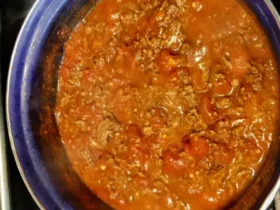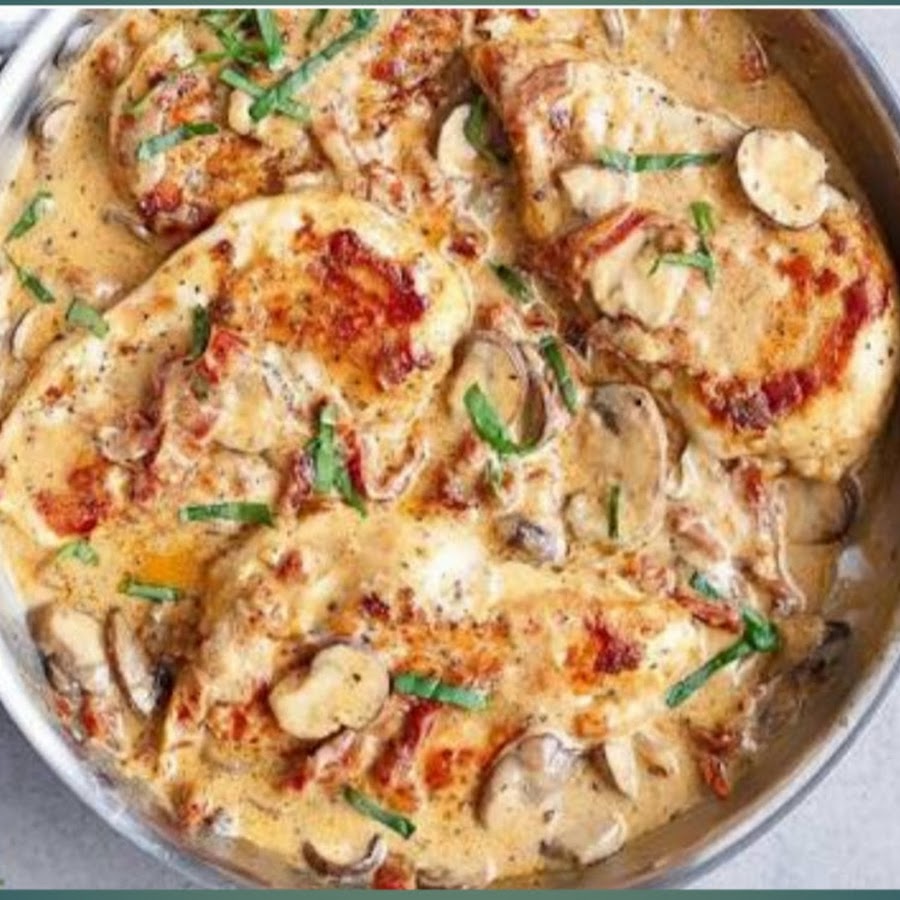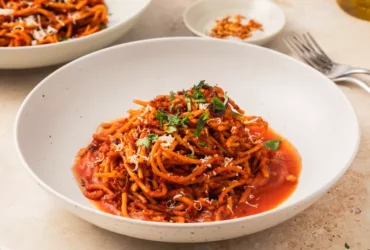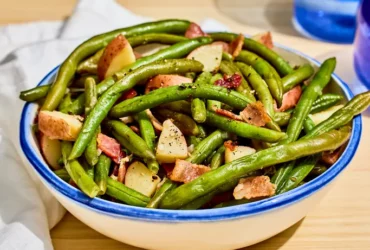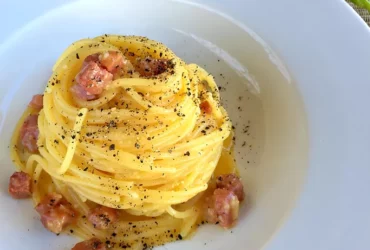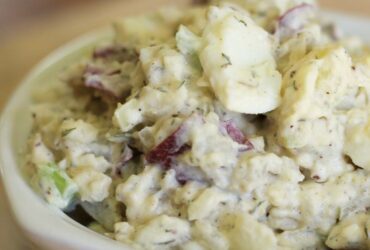Classic Dinner Recipes
Cooking Methods for Success
Dinner recipes are an integral part of any household, providing sustenance and nourishment to family members and guests alike. Classic dinner recipes have stood the test of time, with many remaining staples of traditional cooking due to their enduring popularity and versatility.
One fundamental aspect of classic dinner recipes is the utilization of basic yet effective cooking methods, such as roasting, grilling, sautéing, or stewing. These techniques not only enhance the flavor and texture of ingredients but also showcase the cook’s skill in executing a well-planned meal. Roasting, for example, is an excellent way to bring out the natural sweetness in vegetables or meats by caramelizing their surface layers through high-temperature cooking.
Grilling, on the other hand, is ideal for adding smoky flavors and achieving crispy textures, often used with lean meats like chicken or fish. Sautéing involves quickly searing ingredients in a hot pan to preserve their nutrients and create a visually appealing dish, typically employed with vegetables or tender cuts of meat. Stewing, meanwhile, is a comforting method where tougher cuts are cooked low and slow to achieve fall-apart tenderness.
Another key aspect of classic dinner recipes is the balance between simplicity and sophistication. Simple yet elegant dishes often rely on fresh ingredients, emphasizing their natural flavors rather than relying on elaborate sauces or condiments. Conversely, more complex recipes can be elevated by layering different textures and flavors, incorporating aromatic spices, herbs, and marinades.
Seasonal cooking is also an essential element in creating memorable dinner recipes. By using seasonal produce, you not only ensure that your dishes are fresh but also support local farmers and contribute to the community’s economic well-being. This practice of embracing the changing seasons can lead to delightful surprises, as new flavors and ingredients emerge.
For a truly satisfying dining experience, classic dinner recipes must be executed with attention to detail, presentation, and plating. A beautifully presented dish not only showcases the cook’s creativity but also enhances the overall enjoyment of the meal. Garnishes, sauces, and carefully chosen servingware all play a crucial role in elevating even the simplest recipe into an extraordinary culinary experience.
Ultimately, mastering classic dinner recipes demands patience, practice, and experimentation. By refining your cooking techniques, learning to balance flavors and textures, and embracing seasonal ingredients, you can craft memorable meals that become family traditions and treasured memories. Whether it’s a simple roasted chicken or a complex multi-course feast, the art of classic dinner recipes lies in its ability to bring people together through shared love of food.
When it comes to cooking up a delicious meal for dinner, there are countless options to choose from.
Classic dinner recipes have been passed down through generations and remain popular today due to their simplicity and flavor.
From comforting casseroles to hearty stews, these timeless dishes never go out of style.
Casseroles
A classic casserole is a staple in many households, and for good reason – they’re easy to make and feed a crowd.
- Tuna Noodle Casserole: This classic recipe combines tuna, noodles, canned cream of mushroom soup, and french-fried onions for a comforting casserole that’s sure to please.
- Lasagna: This Italian staple is made with layers of pasta, meat sauce, ricotta cheese, and melted mozzarella.
Stir-Fries and Skillets
One-pot wonders are perfect for a quick and easy dinner. Here are some classic stir-fry and skillet recipes:
Fajita Skillet
This flavorful dish combines sliced beef, peppers, onions, fajita seasoning, and tortillas for a meal that’s both spicy and satisfying.
Chicken Fried Rice
- A Chinese staple made with cooked rice, scrambled eggs, soy sauce, and your choice of protein (usually chicken or shrimp).
Braised Meats
Braising is a cooking technique that’s perfect for tenderizing tougher cuts of meat. Here are some classic braised meat recipes:
- Beef Bourguignon
This French stew is made with beef short ribs, mushrooms, onions, garlic, and red wine.
- Chicken Cacciatore: A hearty Italian dish made with chicken breast or thighs, onions, bell peppers, tomatoes, and herbs.
Comforting Classics
When you need a dose of comfort food, these classic recipes hit the spot:
- Macaroni and Cheese
A creamy pasta bake made with macaroni, cheddar cheese sauce, and a crunchy breadcrumb topping.
- Mashed Potato Casserole: A comforting casserole made with mashed potatoes, ground beef or chicken, and topped with crispy breadcrumbs.
In conclusion, these classic dinner recipes never go out of style because they’re easy to make, delicious, and remind us of home and comfort.
Baked Chicken Parmesan: A Crowd Pleaser
Baked Chicken Parmesan: A Crowd-Pleasing Classic Dinner Recipe
The beauty of Baked Chicken Parmesan lies in its simplicity and versatility, making it a staple in many Italian-American households. This classic dinner recipe has been a crowd-pleaser for generations, and for good reason – the combination of crispy, cheesy goodness is sure to satisfy even the pickiest of eaters.
What makes Baked Chicken Parmesan so special? For starters, the tender chicken breasts are breaded with a crunchy mixture of breadcrumbs, parmesan cheese, and herbs, creating a satisfying texture that’s both crispy and golden. But it’s not just about the breading – the addition of melted mozzarella cheese on top adds an extra layer of creaminess and flavor.
Of course, no discussion of Baked Chicken Parmesan would be complete without mentioning the star of the show: marinara sauce. This classic Italian staple provides a tangy, slightly sweet contrast to the richness of the chicken and cheese. Whether you make your own sauce from scratch or use store-bought, it’s an essential component that brings everything together.
One of the best things about Baked Chicken Parmesan is its adaptability – feel free to customize with your favorite toppings! Add some sliced bell peppers or cherry tomatoes for extra flavor and nutrients. You could even try substituting the chicken with eggplant, zucchini, or portobello mushrooms for a vegan-friendly option.
So what’s the secret to making Baked Chicken Parmesan truly unforgettable? It all comes down to attention to detail: make sure your breading is evenly coated, your cheese is melted to perfection, and your sauce is simmered low and slow. With these tips in mind, you’ll be well on your way to creating a classic dinner recipe that’s sure to become a family favorite.
Ready to give it a try? Here’s a simple recipe to get you started:
Baked Chicken Parmesan Recipe:
Ingredients:
- 4 boneless, skinless chicken breasts
- 1 cup breadcrumbs
- 1/2 cup grated parmesan cheese
- 1 egg
- Salt and pepper to taste
- 1 cup marinara sauce
- 8 ounces mozzarella cheese, sliced
Instructions:
- Preheat oven to 400°F (200°C).
- Prepare the breading station by mixing breadcrumbs, parmesan cheese, salt, and pepper in a shallow dish.
- Dip each chicken breast in the beaten egg and then coat with the breadcrumb mixture, pressing gently to adhere.
- Place the breaded chicken breasts on a baking sheet lined with parchment paper.
- Spoon marinara sauce over the top of each chicken breast, followed by a sprinkle of mozzarella cheese.
- Bake for 25-30 minutes or until golden brown and cooked through.
That’s it! With these simple steps and some basic pantry staples, you’ll be enjoying a delicious Baked Chicken Parmesan that’s sure to become a new family favorite.
Slow Cooker Beef Stew: Fall Off The Bone Tender
A classic dinner recipe that never fails to impress is a slow cooker beef stew that’s fall-off-the-bone tender. This comforting dish is perfect for a chilly evening, and its ease of preparation makes it an ideal choice for busy families or individuals.
The key to achieving this tender texture is in the cooking method, which utilizes low heat over a prolonged period to break down the connective tissues in the beef. The result is a rich, flavorful broth filled with melt-in-your-mouth chunks of meat and vegetables.
Here’s a basic recipe to get you started:
- 1 pound beef stew meat (such as chuck or round)
- 2 medium-sized potatoes, peeled and cubed
- 1 large onion, chopped
- 3 cloves of garlic, minced
- 1 cup of all-purpose flour
- 2 cups of beef broth
- 1 tablespoon tomato paste
- 2 bay leaves
- Salt and pepper to taste
To prepare the dish, start by browning the beef in a skillet over medium-high heat until it’s nicely seared on all sides. This step enhances the flavor of the meat and adds texture.
Next, add the chopped onion to the skillet and cook until it’s translucent, then add the minced garlic and cook for an additional minute.
In a separate mixing bowl, combine the flour, beef broth, tomato paste, salt, pepper, and bay leaves. Whisk the mixture until it’s smooth and free of lumps.
Add the potatoes to the slow cooker and pour in the prepared sauce, making sure that the potatoes are fully submerged. Add the browned beef on top, then cover the slow cooker with its lid and cook for 8-10 hours on low heat or 4-6 hours on high heat.
After the cooking time has elapsed, remove the bay leaves from the slow cooker and use a pair of tongs to transfer the stew meat to a cutting board. Use two forks to shred the beef into bite-sized pieces.
The finished product is a hearty, comforting meal that’s perfect for a weeknight dinner or special occasion. Serve it over mashed potatoes, with some crusty bread on the side, and you’ll have a dish that everyone will love.
Grilled Salmon with Lemon and Herbs: Perfectly Balanced Flavors
Classic dinner recipes never go out of style, and one of the most popular and enduring dishes is Grilled Salmon with Lemon and Herbs. This simple yet elegant recipe has been a staple in many kitchens for decades, and its popularity endures due to its perfectly balanced flavors and impressive presentation.
The beauty of this dish lies in its ability to combine the delicate flavor of salmon with the brightness of lemon and the subtlety of herbs, creating a harmonious balance that is sure to please even the most discerning palate. The use of fresh herbs such as parsley, dill, or tarragon adds a fragrant and refreshing note to the dish, while the acidity of the lemon helps to cut through the richness of the salmon.
The recipe itself is quite straightforward. Start by preheating your grill to medium-high heat. Season the salmon fillets with salt and pepper, then brush them lightly with olive oil and place them on the grill. Cook for 4-6 minutes per side, or until cooked through.
While the salmon is cooking, mix together a combination of minced herbs (such as parsley, dill, and chives) with lemon juice, salt, and pepper to create a fragrant and zesty sauce. Once the salmon is cooked, brush it with this herb-infused lemon sauce and serve immediately.
One of the keys to success with this recipe is using high-quality ingredients. Look for fresh, wild-caught salmon that has been sustainably sourced, and choose herbs that are at their peak freshness. A good rule of thumb is to use herbs within a day or two of harvesting for the best flavor and aroma.
Another tip is to don’t overcook the salmon. It’s better to err on the side of undercooking than overcooking, as this will help preserve the delicate texture and flavor of the fish. Use a meat thermometer to check for internal temperature (135°F – 140°F), and remove it from the heat when it reaches this temperature.
This recipe is perfect for any occasion, whether you’re entertaining guests or cooking a simple dinner for yourself. The combination of flavors and textures is sure to impress, and the ease of preparation makes it an ideal choice for busy home cooks.
So why not give Grilled Salmon with Lemon and Herbs a try tonight? With its perfectly balanced flavors and impressive presentation, it’s sure to become a new classic dinner recipe in your repertoire.
International Inspirations
Culinary Delights from Around the World
- Culinary delights are an integral part of international cultures, reflecting the unique flavors and traditions of different nations around the world.
- From spicy curries to savory stews, each region offers a distinct flavor profile that showcases its history, geography, and people.
- In this article, we will embark on a gastronomic journey across continents, exploring some of the most mouth-watering international dinner recipes that have gained popularity globally.
Culinary Inspirations from Asia
Asian cuisine is known for its bold flavors and aromatic spices. One dish that epitomizes this blend is Biriyani, a classic Indian recipe made with marinated meat or vegetables, cooked with fragrant basmati rice and a medley of spices.
Another Asian gem is the Noodle Soup from Thailand, which boasts a rich broth infused with lemongrass, galangal, and mushrooms, served alongside springy noodles and garnished with fresh herbs like mint or basil.
Culinary Delights from Europe
In the heart of Europe, Italian cuisine takes center stage with its love for simplicity, freshness, and rich flavors. One iconic dish is the Risotto alla Milanese, a creamy rice concoction cooked with saffron-infused broth, Parmesan cheese, and tender ossobuco.
From Greece comes the savory Moussaka, a layered masterpiece of eggplant, ground meat, and rich béchamel sauce that has captured hearts around the world.
Culinary Inspirations from Latin America
Latin American cuisine bursts with vibrant flavors, tropical fruits, and spices. The Feijoada, a Brazilian stew made from black beans and various meats, showcases this unique blend of cultures.
The Mexican staple, Chiles Rellenos, consists of roasted poblano peppers stuffed with cheese, battered, and fried to perfection. This dish embodies the rich cultural heritage of Mexico’s indigenous people.
Culinary Delights from Africa
In the spirit of African cuisine lies the harmonious balance between spices, herbs, and stews. The Jollof Rice, a West African dish made with tomatoes, onions, peppers, and spices, has become a beloved recipe across the continent.
The North African staple, Tagine, a slow-cooked stew made with tender meat or vegetables, dried fruits, and fragrant spices, is a testament to Morocco’s rich culinary legacy.
Culinary Inspirations from the Americas
North American cuisine boasts a mix of indigenous, European, and African influences. One classic dish that embodies this blend is Barbecue Ribs, which combines slow-cooked pork ribs with a tangy BBQ sauce.
In South America, the Peruvian staple, Lomo Saltado, showcases Chinese and Spanish influences in its sautéed beef strips cooked with onions, tomatoes, and French fries.
Culinary Delights from Around the World
As we conclude our gastronomic journey across continents, it’s clear that culinary delights are a universal language that connects people, cultures, and traditions. Whether you’re a seasoned chef or an adventurous home cook, exploring international dinner recipes will not only elevate your cooking skills but also provide a deeper appreciation for the rich cultural heritage behind each dish.
International inspirations can elevate dinner recipes to new heights by introducing unique flavors, ingredients, and cooking techniques from around the world. This can be achieved by incorporating global cuisines into traditional meals or experimenting with international spices and seasonings.
One way to bring international flair to dinner is to try various types of flatbreads from different cultures. For example, naan bread from India adds a soft and slightly leavened texture to dishes like chicken tikka masala, while chapatis from Mexico make a great base for tacos filled with seasoned meats and vegetables.
Another way to explore international inspirations is by experimenting with global spices and seasonings. Korean chili flakes called gochugaru can add a bold and spicy kick to noodle dishes like Japchae or kimchi fried rice, while the Middle Eastern spice blend known as za’atar adds depth and warmth to roasted vegetables.
Culinary traditions from around the world also offer inspiration for vegetarian and vegan dinner recipes. For example, the Indian concept of dosas – fermented crepe-like breads filled with spiced potatoes or lentils – can be adapted into vegan versions using plant-based ingredients like tofu or seitan.
Some popular international cuisines that lend themselves to dinner recipe ideas include Mediterranean, Latin American, and Southeast Asian. These flavors and techniques can be incorporated into traditional meals through dishes such as Moroccan tagine, Thai red curry with fish balls, or Peruvian stir-fried lomo saltado.
The beauty of incorporating international inspirations into dinner recipes lies in their ability to add variety and excitement without being too overwhelming for the palate. Whether it’s a simple pasta dish infused with Middle Eastern spices or an elaborate Indian thali consisting of multiple small bowls, these flavors have something for everyone.
Overall, exploring international cuisines can greatly enrich one’s cooking experience by providing endless possibilities for experimentation and innovation in the kitchen. By embracing global flavors and techniques, dinner recipes can transcend their original form to become more vibrant and engaging experiences for both cooks and eaters alike.
Korean BBQ Beef Tacos: A Fusion of Flavors
- Korean BBQ Beef Tacos are a delightful fusion of flavors and cuisines, combining the bold spices of Korean barbecue with the classic simplicity of Mexican tacos.
- The dish begins with thinly sliced beef short ribs or bulgogi, which are marinated in a sweet and spicy mixture of soy sauce, brown sugar, garlic, ginger, and gochujang – a fermented Korean chili paste.
- As the beef cooks to perfection on the grill, its rich flavors meld together with the aroma of toasted sesame oil and the subtle nuttiness of toasted sesame seeds.
- Warm tacos shells are then filled with the tender beef, topped with a crunchy slaw made from red cabbage, carrots, cilantro, and scallions, adding a refreshing crunch to each bite.
- A drizzle of spicy gochujang sauce and a sprinkle of toasted sesame seeds complete this flavorful fusion, marrying the bold spices of Korea with the vibrant spirit of Mexico.
- International Inspirations such as Korean BBQ Beef Tacos showcase the beauty of culinary exchange, allowing flavors to blend and cultures to intersect in unexpected yet harmonious ways.
- This innovative recipe is perfect for adventurous eaters, foodies, or anyone looking to spice up their dinner routine with a bold new flavor combination that will leave everyone eager for more.
Indian Butter Chicken: Rich and Creamy Curry Sauce
International Inspirations, Indian Butter Chicken: Rich and Creamy Curry Sauce is a dinner recipe that embodies the rich flavors of India’s culinary heritage. This dish is a masterclass in balancing spices, creamy textures, and aromatic flavors, making it a staple in many Indian restaurants and homes.
The origins of this iconic dish are shrouded in mystery, but its evolution is well-documented. Butter chicken, also known as murgh makhani, has its roots in the Mughal Empire, where rich and creamy sauces were a hallmark of royal cuisine. Over time, variations of the recipe spread throughout India, with each region adding its own twist to create this beloved dish.
One of the key elements that set International Inspirations, Indian Butter Chicken: Rich and Creamy Curry Sauce apart is its use of high-quality spices. A blend of warm spices like cumin, coriander, cinnamon, cardamom, and cloves forms the backbone of this sauce. These aromatics add depth and warmth to the dish, complementing the creamy texture provided by butter and yogurt.
Another essential component is the richness contributed by tomato puree, which adds a velvety smoothness to the sauce. This blend of spices, tomatoes, and creamy textures creates an unctuous sauce that coats the chicken beautifully, making each bite a sensory experience.
The recipe itself begins with marinating chicken breast in a mixture of yogurt, lemon juice, garam masala, cumin powder, coriander powder, cayenne pepper, salt, and black pepper. This process allows the flavors to penetrate deep into the meat, making it tender and aromatic when cooked.
After marinating, the chicken is grilled or baked until it reaches a nice char, at which point it’s added to a rich sauce made from butter, oil, onion paste, tomato puree, cumin powder, coriander powder, cayenne pepper, salt, and black pepper. This mixture is then simmered for 15-20 minutes, allowing the flavors to meld together in harmony.
The addition of heavy cream or half-and-half at this stage gives the sauce its signature creamy texture and richness. The acidity from the yogurt also helps to balance the dish by cutting through the creaminess.
When served with basmati rice, naan bread, or rotis, International Inspirations, Indian Butter Chicken: Rich and Creamy Curry Sauce is a dinner recipe that’s sure to transport your taste buds on an unforgettable journey. With its complex blend of spices, creamy textures, and aromatic flavors, this dish has something for everyone – whether you’re a seasoned foodie or just discovering the joys of Indian cuisine.
Mexican Chili con Carne: Hearty and Spicy OnePot Wonder
Mexican cuisine has had a profound impact on international flavors, particularly when it comes to hearty one-pot dishes like Chili con Carne.
The origins of Chili con Carne date back to the late 19th century in the southern United States, where cowboys would cook ground beef with chili peppers, garlic, and tomatoes over an open flame.
Over time, Mexican immigrants brought their own variations of this dish to the table, incorporating staple ingredients like chipotle peppers, cumin, and oregano.
The name “Chili con Carne” is Spanish for “chili with meat,” which aptly describes this flavorful stew that typically consists of ground beef or a combination of meats (such as pork and beef), simmered in a rich tomato-based broth flavored with spices and chilies.
When it comes to preparing Mexican Chili con Carne, the key to its bold flavor is in the quality of the ingredients, particularly the type of chili peppers used.
For a truly authentic experience, look for chipotle or Anaheim peppers, which offer a deep smokiness and a touch of sweetness that pairs perfectly with the savory beef and spices.
Additionally, using a mixture of ground meats can add depth and complexity to the dish, while also making it more substantial and filling.
In terms of technique, this one-pot wonder is best prepared by browning the meat in a skillet before adding the aromatics, chilies, and broth, then letting the stew simmer for at least an hour to allow all the flavors to meld together.
To serve, you can ladle the Chili con Carne into bowls or tacos, topped with your favorite garnishes like diced onions, sour cream, shredded cheese, and fresh cilantro.
Sides and Desserts
Finishing Touches for Your Meal
Serving sides and desserts are crucial components to complete a meal, adding variety and depth to the dining experience. When selecting sides and desserts for your dinner, consider the flavors, textures, and colors you want to incorporate.
Here’s a list of common side dishes that pair well with various main courses:
- Cooked vegetables (e.g., steamed broccoli, roasted carrots) complement lighter meals like salads or grilled chicken
- Mashed potatoes or sweet potatoes pair nicely with heartier dishes such as beef stews or lamb chops
- Garlic bread or rolls are great accompaniments to comfort food classics, such as lasagna or meatloaf
- Salads (e.g., green salad, pasta salad) provide a refreshing contrast to rich or oily main courses like pizza or fried chicken
- Grains (e.g., quinoa, brown rice) serve as nutritious sides for meals featuring lean proteins like salmon or tofu
For dessert, consider the following options:
- Fruit-based desserts (e.g., fruit salad, cobbler) are a light and healthy way to end meals with fresh flavors
- Creamy custards or puddings pair well with rich or savory main courses, providing a soothing contrast in texture
- Baked goods (e.g., cakes, cookies) can be both classic and indulgent, offering a comforting finish to meals
- Chocolate-based desserts (e.g., brownies, cheesecake) provide an intense flavor experience for those with a sweet tooth
When combining sides and desserts, think about creating harmony through complementary flavors or textures. For example:
- A savory main course paired with a creamy sauce can be balanced by a rich dessert like chocolate mousse
- A light meal featuring grilled chicken may call for a fresh and fruity dessert, such as a mixed berry tart
In conclusion, the right sides and desserts can elevate your dinner experience, adding depth, variety, and flair. By considering flavor combinations, textures, and colors, you can create a well-rounded meal that pleases both palate and presentation.
- Sides and desserts are an integral part of a well-rounded dinner recipe, adding variety and flavor to the meal.
- For sides, you can consider serving classic dishes such as roasted vegetables, mashed potatoes, or green beans almandine.
- Roasted vegetables like Brussels sprouts, carrots, and broccoli are easy to make and packed with nutrients.
- To prepare them, toss the vegetables in olive oil, salt, and your choice of seasonings, then roast in the oven until tender and caramelized.
- Mashed potatoes are a comforting side dish that can be made with boiled potatoes, butter or milk, and a pinch of salt and pepper.
- You can also add flavor to your mashed potatoes by mixing in grated cheese, diced herbs, or a spoonful of pesto.
- For a lighter option, green beans almandine is a tasty side dish made with blanched green beans, sliced almonds, and a drizzle of lemon butter.
- Desserts are the perfect way to end a meal on a sweet note.
- You can choose from classic desserts like cheesecake, creme brulee, or chocolate mousse, or opt for something more unique like tiramisu or crème caramel.
Here are some tips for making delicious desserts:
- Use high-quality ingredients: Fresh eggs, real cream, and good quality chocolate will make a big difference in the flavor of your dessert.
- Don’t overmix: Mix wet and dry ingredients separately and gently fold them together to avoid developing the gluten in the flour.
- Add flavor with extracts: Vanilla, almond, and coffee extract can add depth and interest to your desserts.
- Top with fresh fruit: A sprinkle of fresh fruit or a drizzle of caramel sauce can add a pop of color and flavor to your dessert.
Some popular side dishes for dinner include:
- Roasted vegetables (such as broccoli, cauliflower, and Brussels sprouts)
- Mashed potatoes
- Green beans almandine
- Garlic bread
- Grilled or roasted corn on the cob
Some popular desserts for dinner include:
- Cheesecake
- Tiramisu
- Creme brulee
- Chocolate mousse
- Crème caramel
Roasted Vegetables with Garlic and Rosemary: Easy and Elegant
Cooking delicious sides and desserts can elevate a meal from ordinary to extraordinary, adding flavors, textures, and visual appeal that leave a lasting impression on diners. In this article, we’ll focus on two essential components of a well-rounded dinner: roasted vegetables with garlic and rosemary, and explore the ease and elegance they bring to any meal.
Sides are often an afterthought in cooking, but they play a crucial role in balancing flavors, textures, and temperatures. A perfectly cooked side dish can enhance the overall dining experience, making each bite more enjoyable and memorable. Among the many options for sides, roasted vegetables stand out as a versatile and flavorful choice.
Roasted vegetables are a simple yet impressive option that can be customized to suit any occasion or cuisine. By tossing vegetables in olive oil, seasoning with salt, pepper, and herbs, and roasting them in the oven until caramelized and tender, you create a dish that is both healthy and delicious. The high heat of roasting brings out the natural sweetness in vegetables, making them a perfect match for savory dishes like roasted meats and stews.
Garlic and rosemary are two classic herbs that pair beautifully with roasted vegetables. Garlic adds a pungent flavor that complements the earthy taste of many vegetables, while rosemary provides a fragrant, slightly bitter note that balances out the richness of garlic. When combined, these two herbs create a flavor profile that is both sophisticated and easy to prepare.
To make roasted vegetables with garlic and rosemary, start by preheating your oven to 425°F (220°C). While it heats up, chop the rosemary and mince the garlic. Then, toss your chosen vegetables (such as Brussels sprouts, carrots, sweet potatoes, or broccoli) in olive oil, salt, pepper, and the chopped rosemary and minced garlic. Spread the vegetables out in a single layer on a baking sheet and roast for 20-25 minutes, or until tender and caramelized.
Desserts are another crucial element of any meal, providing a sweet contrast to savory flavors and textures. While sides like roasted vegetables focus on complementing main courses, desserts take center stage as the crowning glory of dinner. From decadent chocolate cakes to fruity sorbets, desserts offer endless possibilities for creative expression and indulgence.
In the world of desserts, elegance is not just about appearance but also about the experience itself. A well-crafted dessert can transport diners to another world with its complex flavors, textures, and presentation. Whether you’re a seasoned baker or a beginner, experimenting with new ingredients and techniques can help you create stunning desserts that leave lasting impressions.
Ultimately, sides like roasted vegetables with garlic and rosemary, combined with creative desserts, offer a winning combination for elevating dinner to new heights of flavor, elegance, and enjoyment. With practice and experimentation, you’ll find the perfect balance between simplicity and sophistication in your cooking, making each meal a true celebration of taste and creativity.
Classic Cheesecake with a Graham Cracker Crust: A Timeless Dessert
Dinner is not just about the main course, it’s also about the sides and desserts that complement it perfectly. Among the countless options available, one classic dessert stands out for its timeless appeal: Cheesecake with a Graham Cracker Crust.
The Cheesecake is a staple in many Dinner Recipes, and when done right, it can be a true showstopper. The combination of creamy cheesecake filling and crunchy graham cracker crust is a match made in heaven. But what sets this dessert apart from others is its versatility.
The Crust is the foundation of any good cheesecake, and a Graham Cracker Crust is one of the most popular options. Made from crushed graham crackers, sugar, and melted butter, it provides a crunchy texture that complements the smooth cheesecake filling perfectly.
The history of cheesecake dates back to ancient Greece, where it was made with creamy cheeses like ricotta and feta. Over time, various cultures adapted this recipe to their own tastes and ingredients, resulting in the diverse range of cheesecakes we see today.
In the United States, cheesecake gained popularity in the mid-20th century, particularly in New York City. The classic cheesecake with a graham cracker crust was born during this time, with iconic restaurants like Lombardi’s Pizza and Julia Child’s serving up some of the city’s best.
Today, Cheesecake is enjoyed worldwide in various flavors, from classic to modern twists like pumpkin spice or strawberry basil. But when it comes to authenticity, a well-made traditional cheesecake with a Graham Cracker Crust remains unmatched.
The magic behind this dessert lies in its simplicity and quality ingredients. With just a few essential components – cream cheese, eggs, sugar, graham cracker crumbs, and melted butter – you can create an unforgettable dining experience. Whether for special occasions or everyday indulgence, the classic cheesecake with a Graham Cracker Crust is sure to become your new favorite dessert.
In summary, Cheesecake with a Graham Cracker Crust is an timeless dessert that embodies the perfect marriage of texture and taste. Its rich history and versatility make it a staple in many dinner recipes, while its authenticity ensures it remains true to its roots.
With this knowledge, you’ll be ready to create your own classic cheesecake with a graham cracker crust for any special occasion or everyday treat.
Banana Pudding Parfait: Creamy, Dreamy, and Deliciously Light
Banana Pudding Parfait is a delightful twist on the classic dessert, combining creamy banana pudding with crunchy cookies and whipped cream to create a dreamy treat that’s both light and delicious.
Here are some key points about Banana Pudding Parfait:
- Creamy Texture: The parfait begins with a layer of creamy banana pudding, made by combining vanilla pudding mix with milk and sliced bananas. This gives the dessert its signature smoothness.
- Crunchy Contrast: Next comes a crunchy layer of cookies, typically Nilla wafers or similar vanilla-flavored treats. The contrast between the soft pudding and crunchy cookies adds depth to the dish.
- Whipped Cream Topping: A dollop of whipped cream tops off the parfait, adding a touch of sweetness and freshness. This light and airy topping provides a lovely finish to each bite.
The combination of textures and flavors in Banana Pudding Parfait makes it an excellent dessert for warm weather or any occasion when you crave something light and refreshing. By layering the ingredients, you can create individual servings that are perfect for potlucks, picnics, or casual gatherings.
To make your own Banana Pudding Parfait, try the following recipe:
Ingredients
- 1 package vanilla pudding mix
- 2 cups milk
- 3-4 sliced bananas
- 1 cup Nilla wafers or similar cookies
- Whipped cream for topping
Instructions
- Combine pudding mix and milk in a bowl until well mixed.
- Fold in the sliced bananas.
- Spoon half of the banana mixture into individual serving cups or glasses.
- Top with a layer of Nilla wafers or similar cookies.
- Spoon the remaining banana mixture over the cookies.
- Top each parfait with a dollop of whipped cream.
A well-rounded dinner typically includes not only the main course but also various sides and desserts that complement its flavors and textures. Sides refer to secondary dishes served alongside the main meal, which may be vegetables, starches, salads, or other accompaniments.
Examples of popular side dishes include roasted or steamed vegetables such as broccoli, carrots, or green beans; starchy options like mashed potatoes, rice, or pasta; and lighter alternatives like salad or quinoa. Each of these choices has the potential to add a unique flavor dimension or contrasting texture to the main dish.
When choosing sides for dinner recipes, consider both their flavor profiles and nutritional value. For instance, adding roasted vegetables can enhance a meal’s visual appeal while providing essential vitamins and antioxidants. Similarly, pairing whole grains with protein sources like lean meats or plant-based options can promote satiety and contribute to overall well-being.
Desserts, on the other hand, provide an opportunity for indulgence and creativity in dinner recipes. A sweet treat after the main meal can be a delightful conclusion to a satisfying dining experience, especially if it’s made with love using fresh ingredients and considered presentation.
The beauty of desserts lies in their versatility, allowing chefs to experiment with various flavors, textures, and presentation styles. Classic options include fruit tarts, decadent chocolate cakes, or creamy cheesecakes that cater to different tastes and preferences. More adventurous cooks may choose to create unique dessert combinations using exotic ingredients, spices, or unexpected flavor pairings.
Regardless of the chosen side dish or dessert, a thoughtful balance between flavors, textures, and presentation is key in elevating dinner recipes into unforgettable experiences for diners. By embracing creativity, considering nutritional value, and showcasing love through cooking, anyone can craft meals that truly shine.
- Best Datanyze Alternatives for 2025 - April 24, 2025
- Best Hunter.io Alternatives for 2025 - April 22, 2025
- Best Lead411 Alternatives for 2025 - April 22, 2025


